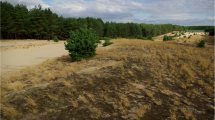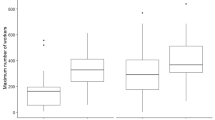Summary:
The colony ontogeny of Myrmicaria opaciventris was studied by comparing worker number and worker size in foundations with one queen (haplometrosis) or 2 to 6 queens (pleometrosis) and in established colonies. Measurements taken of head width related to scape length showed that the worker caste is weakly polymorphic and exhibits a unimodal size distribution. Classically, the first workers produced in both types of foundations are smaller than those emerging later. Moreover, the worker caste allometry changes with the type of foundation and the age of colony: it varies from a negative allometry for haplometrotic foundations to a stage of isometry in pleometrotic foundations and finally a positive allometry for established colonies. The number of workers produced by the queens is classically larger in pleometrotic than in haplometrotic foundations. However, two uncommon phenomena are described in this species: (1) queen association during colony founding increases their individual fecundity; and (2) the workers produced differ in size and allometry according to the type of foundation.
Similar content being viewed by others
Author information
Authors and Affiliations
Additional information
Received 8 February 1999; revised 14 June 1999; accepted 7 July 1999.
Rights and permissions
About this article
Cite this article
Kenne, M., Dejean, A., Fénéron, R. et al. Changes in worker polymorphism in Myrmicaria opaciventris Emery (Formicidae, Myrmicinae). Insectes soc. 47, 50–55 (2000). https://doi.org/10.1007/s000400050008
Issue Date:
DOI: https://doi.org/10.1007/s000400050008




